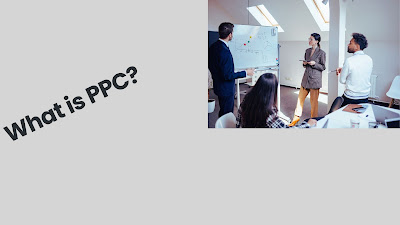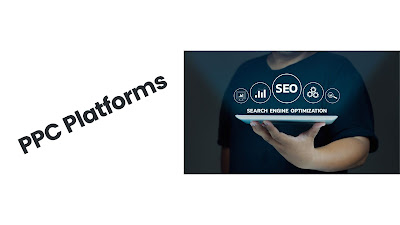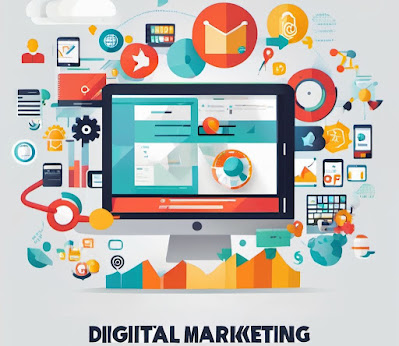Digital marketing is a dynamic field that constantly evolves to accommodate changes in technology, consumer behavior, and market dynamics. As we move further into 2024, several trends are shaping the landscape of digital marketing, influencing strategies, and driving innovation. Here’s a comprehensive look at the most significant trends currently shaping the world of digital marketing.
1.Artificial Intelligence and Machine Learning
Artificial Intelligence (AI) and Machine Learning (ML) continue to revolutionize digital marketing. AI-powered tools are increasingly used for data analysis, customer segmentation, and predictive analytics. These technologies enable marketers to gain deeper insights into consumer behavior, personalize marketing efforts, and optimize campaigns in real-time.
For instance, AI can analyze vast amounts of data to identify patterns and trends, helping marketers make more informed decisions. Machine learning algorithms can predict future customer behavior based on historical data, allowing for more targeted marketing strategies.
Chat Bots and virtual assistants, powered by AI, are also becoming more sophisticated, providing personalized customer support and enhancing user experience.
2. Voice Search Optimization
With the rise of smart speakers and voice-activated assistants like Amazon’s Alexa, Google Assistant, and Apple’s Siri, voice search has become a significant trend in digital marketing. More consumers are using voice commands to search for information, make purchases, and interact with brands.
This shift requires marketers to optimize their content for voice search. Unlike traditional text-based searches, voice searches are often more conversational and longer in nature. Therefore, incorporating natural language and long-tail keywords into content is crucial. Additionally, optimizing for local search results, as voice searches often have a local intent, can enhance visibility and drive traffic.
3.Video Marketing Dominance
Video marketing continues to be a dominant force in digital marketing. Platforms like YouTube, TikTok, and Instagram Reels are immensely popular, and video content consistently outperforms other types of content in terms of engagement.
In 2024, we’re seeing an increase in live streaming, short-form videos, and interactive video content. Live streaming allows brands to connect with their audience in real-time, fostering a sense of community and authenticity. Short-form videos, popularized by TikTok, are effective for capturing attention and delivering quick, impactful messages. Interactive videos, which include elements like quizzes and clickable links, engage viewers and enhance the overall user experience.
4. Social Commerce
Social media platforms are increasingly integrating e-commerce features, creating a seamless shopping experience within the social media environment. This trend, known as social commerce, allows users to discover, browse, and purchase products directly from social media apps like Instagram, Facebook, and Pinterest.
Social commerce is driven by the growing influence of social media on consumer purchasing decisions. Features like shoppable posts, in-app checkout, and augmented reality (AR) try-ons are making it easier for brands to convert social media engagement into sales. Influencer marketing also plays a significant role in social commerce, as consumers often trust recommendations from their favorite influencers.
5. Personalization and Hyper-Targeting
Personalization has been a key trend in digital marketing for several years, but it’s becoming even more critical in 2024. Consumers expect personalized experiences, and brands that can deliver relevant, customized content are more likely to build strong relationships with their audience.
Advances in data analytics and AI are enabling more sophisticated personalization strategies. Marketers can now create hyper-targeted campaigns that address individual preferences, behaviors, and needs. Personalization extends beyond email marketing to include personalized product recommendations, targeted ads, and customized website experiences.
6.Privacy and Data Protection
With increasing concerns about data privacy, new regulations, and changes in data collection practices, digital marketers must prioritize data protection. The phasing out of third-party cookies by major browsers has significant implications for digital advertising and tracking.
Marketers are turning to first-party data (data collected directly from consumers) and zero-party data (data that consumers voluntarily share) to build personalized marketing strategies while respecting privacy. Transparent data collection practices and robust data protection measures are essential for maintaining consumer trust and complying with regulations like the General Data Protection Regulation (GDPR) and the California Consumer Privacy Act (CCPA).
7. Content Experience
Content experience goes beyond content marketing; it focuses on how content is structured, presented, and interacted with. In 2024, providing a seamless and engaging content experience is crucial for capturing and retaining audience attention.
This involves optimizing website design, improving site speed, and ensuring content is mobile-friendly. Interactive content, such as polls, quizzes, and infographics, enhances engagement and makes the content experience more enjoyable. Additionally, creating content hubs or resource centers can provide a cohesive and comprehensive content experience, encouraging users to explore more and stay longer on the site.
8.Augmented Reality (AR) and Virtual Reality (VR)
AR and VR technologies are gaining traction in digital marketing, offering immersive experiences that captivate and engage audiences. AR, in particular, is being used for virtual try-ons, interactive product demonstrations, and enhancing in-store experiences.
For example, beauty and fashion brands are leveraging AR to allow customers to virtually try on makeup or clothing. Home decor brands use AR to help customers visualize how furniture would look in their space. VR, on the other hand, is being used for virtual tours, experiential marketing, and gamified brand experiences.
9.Sustainability and Social Responsibility
Consumers are increasingly conscious of the social and environmental impact of their purchases, and they expect brands to act responsibly. Digital marketing strategies that highlight sustainability efforts and social responsibility are resonating with consumers in 2024.
Brands are incorporating sustainability into their messaging, showcasing eco-friendly products, sustainable practices, and corporate social responsibility (CSR) initiatives. Authenticity is key; consumers can easily spot greenwashing (falsely claiming to be environmentally friendly), so transparency and genuine efforts are crucial.
10.The Rise of Micro-Moments
Micro-moments refer to the brief instances when consumers turn to their devices to quickly find information, make a decision, or complete a task. These moments are intent-rich and present significant opportunities for marketers to connect with consumers.
To capitalize on micro-moments, marketers need to provide relevant, real-time information that meets consumer needs instantly. This involves optimizing content for mobile devices, using location-based targeting, and ensuring a seamless user experience across all touchpoints.
11.Influencer Marketing Evolution
Influencer marketing continues to be a powerful tool for brands, but it’s evolving in 2024. There’s a shift towards long-term partnerships with influencers rather than one-off collaborations. This approach builds more authentic relationships and fosters deeper connections with the influencer’s audience.
Micro-influencers (influencers with smaller, but highly engaged followings) are also gaining traction. They often have more niche audiences and higher engagement rates, making them effective for targeted marketing campaigns. Transparency and authenticity are critical; consumers value genuine endorsements over overtly sponsored content.
12.Voice and Visual Search
Beyond traditional text search, voice and visual search are becoming more prevalent. Voice search, as mentioned earlier, requires optimization for natural language queries. Visual search, enabled by technologies like Google Lens, allows users to search using images rather than text.
Marketers need to optimize their visual content for search engines, ensuring high-quality images, relevant alt text, and metadata. Visual search can enhance user experience and drive traffic, especially for e-commerce brands where product visuals play a crucial role in the purchasing decision.
13.User-Generated Content (UGC)
User-generated content (UGC) is a powerful form of social proof that can enhance brand credibility and engagement. Encouraging customers to share their experiences, reviews, and content related to the brand creates authentic and relatable content.
UGC can be integrated into various marketing channels, including social media, websites, and email campaigns. It not only provides fresh and diverse content but also builds a sense of community and loyalty among customers.
14. Interactive Content
Interactive content, such as quizzes, polls, calculators, and interactive infographics, engages users by requiring active participation. This type of content is more engaging than passive content, encouraging users to spend more time on the site and interact with the brand.
Interactive content also provides valuable insights into consumer preferences and behaviors, which can inform future marketing strategies. It’s an effective way to capture attention, enhance user experience, and drive conversions.
15. Blockchain Technology
Blockchain technology, known for its association with cryptocurrencies, is finding applications in digital marketing. Blockchain can enhance transparency, security, and trust in digital advertising by verifying the authenticity of ad impressions and clicks.
It also enables more secure and transparent transactions, reducing the risk of ad fraud. Blockchain-based solutions can help marketers track and verify the entire advertising supply chain, ensuring that their ads are reaching genuine audiences.
Conclusion
The digital marketing landscape in 2024 is characterized by rapid technological advancements, evolving consumer behaviors, and a greater emphasis on personalization, privacy, and authenticity. Staying ahead of these trends requires marketers to be agile, innovative, and customer-centric. By leveraging the latest technologies and strategies, brands can create impactful and meaningful connections with their audience, driving growth and success in an ever-changing digital world.
































